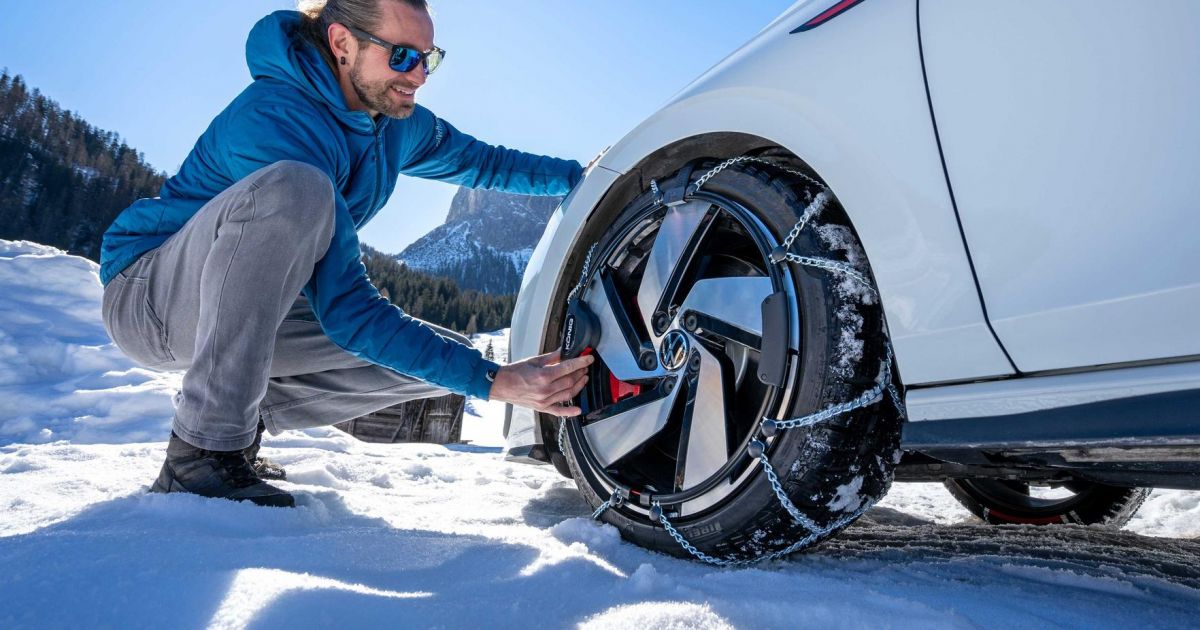Everything you need to know about snow chains
As the temperature drops and snow (hopefully) falls, Australians are gearing up for winter adventures – hitting the slopes from the Snowy Mountains to the icy roads of Tasmania.
But before you set off, there’s one crucial item you need in Australia: snow chains.
Our complete guide to snow chains will have you prepped and ready for any snow-related adventure you have planned this winter.
What are snow chains?
Snow chains are metal links that fit around your vehicle’s tyres.
They provide traction between the snowy or icy roads and vehicles wearing summer tyres, giving the driver more control over the vehicle in alpine conditions.
There are three different classifications of snow chains: automatic tensioning, assisted tensioning, and manual tensioning.
Each reaches the correct tension on the wheel in different ways, thus impacting how easy they are to install.
Where are snow chains mandatory in Australia?
The mandates for snow chains vary per Australian state – so it always pays check your state’s government site, or contact a Service Centre to clarify the rules before travelling.
Legislation does not specify if the chains you carry in your vehicle must fit your car… but it is common sense to carry chains that fit the vehicle you’re driving.
Snow chains must be carried in the following locations:
New South Wales
In NSW, two-wheel drive cars entering Kosciusko National Park between June and October long weekends must carry snow chains.
In addition, snow chains much be carried on the following roads:
- Kosciusko Road from the Kosciusko National Park boundary at Thredbo River to Perisher Valley
- Alpine Way between Thredbo and Tom Groggin
- Island Bend/Guthega Road for its full length
The NSW Government also encourages snow chains to be carried on the following areas outside Kosciusko National Park:
- Alpine Way between Jindabyne and Thredbo
- Snowy Mountains Highway
Four-wheel and all-wheel drive vehicles do not require chains under National Parks Regulations. However, it is still recommended that you carry chains with you and ensures they fit your vehicle.
Victoria
According to the Alpine Resorts (Management) Regulation 2020, all Victorian drivers entering any alpine area must carry snow chains at all times.
Like in New South Wales, it’s sensible to ensure the chains you’re carrying fit the vehicle you’re driving.
Tasmania
In Tasmania, all travellers driving in Mount Field and Ben Lomond ski areas must carry snow chains.
What else do I need to know about snow chains?
Snow chains are fitted to the rear wheels of rear-wheel drive cars, or the front wheels on front-, all-, or four-wheel drive vehicles.
Snow chains are available for most vehicles, including cars, trucks, SUVs, and 4x4s and can be purchased at automotive retail stores. They can also often be rented on the way to mountains.
Best practice is to contact your alpine location before arrival and ask whether you can rent the chains there, or on the way to the resort.
When choosing your snow chains, consider the following questions:
- Does your vehicle have a tyre chain restriction?
- What is the size of your tyre?
- What tyre chain is best suited for your vehicle?
MORE: What do the numbers on the side of your tyre mean? Tyre sizes explained.
How to drive with snow chains on
Driving with snow chains requires different driving behaviours. Remember you are travelling in different conditions than usual.
A few points to remember are:
- Do not exceed 30-50km/h as driving too fast can damage your car and the chains
- Remove your snow chains at a safe location
- Maintain a safe distance between you and the car in front
- Try and avoid large puddles of water
- Avoid dry roads for extended periods of time
When driving with snow chains, avoids sudden acceleration or deceleration to maintain control.
Smooth, gradual movements are key.
Best snow chain tips
Before hopping the car, keep these best tips in mind:
- Before you travel, check the weather forecast to ensure safe driving conditions.
- Practice makes perfect: Before travelling into alpine regions, practice applying and removing the snow chains from your tyres.
- Inform someone about your travel plans and estimated arrival time
- Pack a safety kit in the event of something dangerous happening
- After you’re finished using the chains, rinse them with water to remove any salt or debris. Dry them thoroughly before laying them on the flat surface. Once they’re dry, store them in a cool, dry place – like a bag or container to prevent them from tangling.




